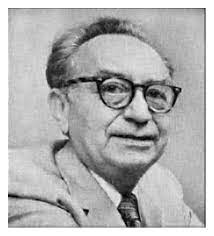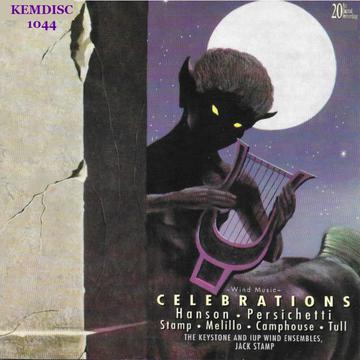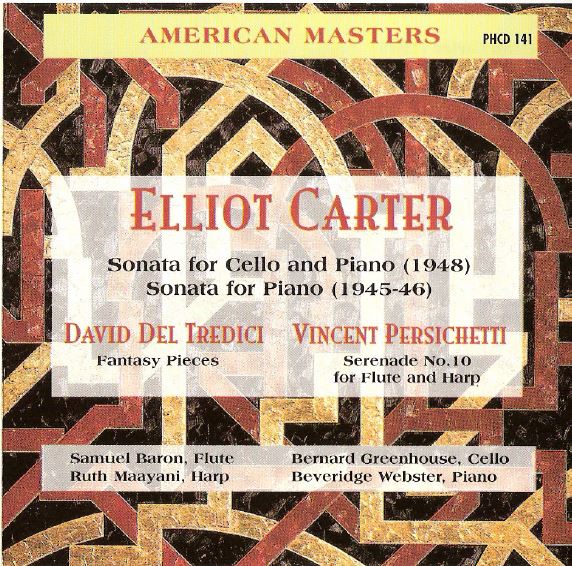
Persichetti, Vincent
Persichetti was born in Philadelphia, Pennsylvania in 1915. Though neither of his parents were musicians, his musical education began early. Persichetti enrolled in the Combs College of Music at the age of five, where he studied piano, organ, double bass and later music theory and composition with Russel King Miller, whom he considered a great influence.
He first performed his original works publicly at the age of 14. By the time he reached his teens, Persichetti was paying for his own education by accompanying and performing. He continued to do so throughout high school, adding church organist, orchestral player and radio staff pianist to his experience. In addition to developing his musical talents, the young Persichetti attended art school and remained an avid sculptor until his death. He attended Combs for his undergraduate education as well. After receiving a bachelor’s degree in 1936, he was immediately offered a teaching position.
By the age of 20, Persichetti was simultaneously head of the theory and composition department at Combs, a conducting major with Fritz Reiner at the Curtis Institute, and a student of piano (with Olga Samaroff) and composition at the Philadelphia Conservatory. He earned a master’s degree in 1941 and a doctorate in 1945 from the Conservatory, as well as a conducting diploma from Curtis. In 1941, while still a student, Persichetti headed the theory and composition department as well as the department of postgraduate study at Philadelphia Conservatory.
In 1941 Persichetti married Dorthea Flanagan who is a composer as well. They gave birth to a daughter named Lauren who is a dancer.
In 1947, William Schuman offered him a professorship at Juilliard. While at the Juilliard School, Persichetti was devoted to the wind band movement and advocated William Schuman and Peter Mennin to compose pieces for wind band. He was on staff at Julliard for over forty years.[1] Persichetti’s students included Einojuhani Rautavaara, Leonardo Balada, Steven Gellman, Peter Schickele (P.D.Q. Bach), Michael Jeffrey Shapiro, Claire Polin, Toshi Ichiyanagi, Robert Witt (who also studied with Persichetti at the Philadelphia Conservatory) and Philip Glass. He became Editorial Director of the Elkan-Vogel publishing house in 1952.
Persichetti is one of the major figures in American music of the 20th century, both as a teacher and a composer. Notably, his Hymns and Responses for the Church Year has become a standard setting for church choirs. His numerous compositions for wind ensemble are often introductions to contemporary music for high school and college students. His early style was marked by the influences of Stravinsky, Bartók, Hindemith, and Copland before he developed his distinct voice in the 1950s.
Persichetti’s music draws on a wide variety of thought in 20th-century contemporary composition as well as Big Band music. His own style was marked by use of two elements he refers to as “graceful” and “gritty”: the former being more lyrical and melodic, the latter being sharp and intensely rhythmic. He frequently used polytonality and pandiatonicism in his writing, and his music could be marked by sharp rhythmic interjections, but his embracing of diverse strands of musical thought makes characterizing his body of work difficult. This trend continued throughout his compositional career. His music lacked sharp changes in style over time. He frequently composed while driving in his car, sometimes taping staff paper to the steering wheel.
His piano music forms the bulk of his creative output, with a concerto, a concertino, twelve sonatas, and a variety of other pieces written for the instrument. These were virtuosic pieces as well as pedagogical and amateur-level compositions. Persichetti was an accomplished pianist. He wrote many pieces suitable for less mature performers, considering them to have serious artistic merit.
Persichetti is also one of the major composers for the concert wind band repertoire, with his 14 works for the ensemble. In 1950, Persichetti composed his first work for band, which was the Divertimento for Band.[2] The Symphony No. 6 for band is of particular note as a standard larger work. This piece boasts complex percussion lines crucial to the work’s thematic material as well as utilizes the full spectrum of colors and timbres of the wind band.[3] He wrote one opera, entitled The Sibyl. The music was noted by critics for its color, but the dramatic and vocal aspects of the work were found by some to be lacking.
He wrote nine symphonies, of which the first two were withdrawn (as were the first two symphonies by two other American composers of the late thirties and early forties, William Schuman and Peter Mennin), and four string quartets.
Many of his other works are organized into series. One of these, a collection of primarily instrumental works entitled Parables, contains 25 works, many for unaccompanied wind instruments (complete listing below). His 15 Serenades include such unconventional combinations as a trio for trombone, viola, and cello, as well as selections for orchestra, for band, and for duo piano.
During the 1950s, Persichetti was perceived to “truly achieve his own distinctive voice,” in the words of Walter G. Simmons. One of Persichetti’s most revered compositions is his Concierto for Piano, Four Hands. This duet was first performed at the Pittsburgh International Contemporary Music Festival on November 29, 1952. The piece itself gives the listener the illusion that the two pianists are having a pleasant conversation, without using words, but just musical notes. The duet featured both Vincent and Dorothea Persichetti as the performers. In his review in the Manchester Guardian, Colin Mason stated, “The Concierto for Piano, Four Hands was for me one of the most interesting stimulating American works of the Pittsburgh International Contemporary Music Festival.”[4]
Mr. Persichetti’s esthetic was essentially conservative, a distinctive blend of Classical, Romantic and Modernist elements, contrapuntal, rhythmically charged and expertly scored. his musical imagination was in fact multifaceted and highly virtuosic. Following the lineage of Mozart, Mendelssohn and Ravel, Persichetti’s music suggests the innocence and childlike joy of pure musical creativity, Walter Simmons wrote in the New Grove Dictionary of American Music. Hence many works for beginners stand, with neither condescension nor apology, alongside more difficult compositions.
Persichetti frequently appeared as a lecturer on college campuses, for which he was noted for his witty and engaging manner. He wrote the noted music theory textbook, Twentieth Century Harmony: Creative Aspects and Practice. He and Flora Rheta Schreiber wrote a monograph on William Schuman.
Persichetti was a big fan of collaboration between music and dance. He encouraged his students at Julliard to work with the dance program to create compositions for the dancers choreography. Persichetti also collaborated with choreographers professionally. He worked with Martha Graham. He admired her seriousness and her commitment to movement. Persichetti believed that music has to stand on its own and can not be married to dance, one can not depend on the other. He once said “There isn’t such thing as dance music. Music is dance, its motion” [5]
Persichetti has performed many concerts consisting of improvisation. He believes any composer/artist must improvise to create. Following the lineage of Mozart, Mendelssohn and Ravel, Persichetti’s music suggests the innocence and childlike joy of pure musical creativity, Walter Simmons wrote in the New Grove Dictionary of American Music.

